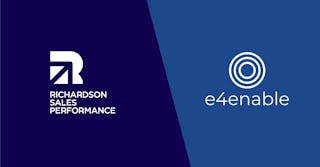Aligning Sales Training with Sales Strategy

I recently read two alarming statistics that should be a wake-up call for sales leaders — and for the Learning and Development professionals they rely on to keep their sales teams well tuned and well trained.
The first comes from a McKinsey Quarterly article titled “Getting More from Your Training Programs”:
- Just 25% of survey respondents said that their training programs measurably improved business performance.
The second statistic comes from a study by the Executive Board’s Corporate Leadership Council:
- More than half of line managers believe that shutting down the L&D function would have no impact on employee performance.
What’s up with that?
Most L&D departments have never worked harder or had more learning tools and technologies available. So, where is the disconnect between capability and impact? I see two root causes.
Cause #1: Poor Alignment to the Sales Strategy
For too long, far too many training departments have become mere order takers, being reactive to requests for training from sales leaders because … well, isn’t some sort of training part of the job? How often do you, as a sales leader, sit down with your L&D colleagues to discuss your strategy, your goals, the metrics you want to measure?
For too long, sales leaders have thought of training as the solution to every kind of performance problem. Sometimes it is, but not always. If there’s a lack of knowledge or new skills to be acquired, training can certainly do the trick. But training can be pointless if the underlying issue is unclear expectations, inadequate feedback, poor motivation or any of the host of other problems that training won’t fix.
Even when training is appropriate, if there isn’t a clear understanding of the real business needs — if there’s no alignment with sales strategy — then don’t be disappointed when you don’t get the results you want. Your L&D colleagues may be experts in Industrial and Organizational Psychology, they may design the most elegant training programs, but if you don’t collaborate with them and share your vision and strategy, they can only guess as to the business outcomes you need to achieve.
Cause #2: Adopting a "Training as an Event" Mentality
An event mentality for training is once-and-done thinking. “My Eastern region sales guy is weak on closing, so I’ll send him for training and he’ll come back cured.” Good luck with that.
And what about the Eastern region sales guy? He gets a certificate of completion at the close of his latest training class. “Done!,” he thinks, that box is checked. But those certificates can have a negative effect, reinforcing the paradigm that once someone finishes class — once the event is over — they have fulfilled their responsibilities.
The truth is that the real work begins when the class ends. And a big part of learning sustainment involves the sales leader. Sustainment can’t be an afterthought; it has to be designed into the training. And all interactions between sales leaders and their teams should reflect the language, the processes, and the metrics from the training. These elements need to be embedded in the day-to-day workflow and in performance assessments.
How To Maximize Return on Your Training Investment
Aligning sales training with sales strategy, and getting an optimum return on your investment in people, can be as simple as following these few steps:
- Share your business needs, strategy and goals with your L&D colleagues.
- Make sure your L&D colleagues understand the linkage between the training activity and the strategic initiative it supports.
- Make sure that training is the appropriate solution to the problem.
- Manage learning as a change process — one that starts before and extends long after the training itself.
- Recognize that your L&D colleagues have special expertise that can be a valuable resource to help you achieve your objectives.

Research: Best Practices in Design Delivery of Sales Training Programs
DownloadGet industry insights and stay up to date, subscribe to our newsletter.
Joining our community gives you access to weekly thought leadership to help guide your planning for a training initiative, inform your sales strategy, and most importantly, improve your team's performance.






